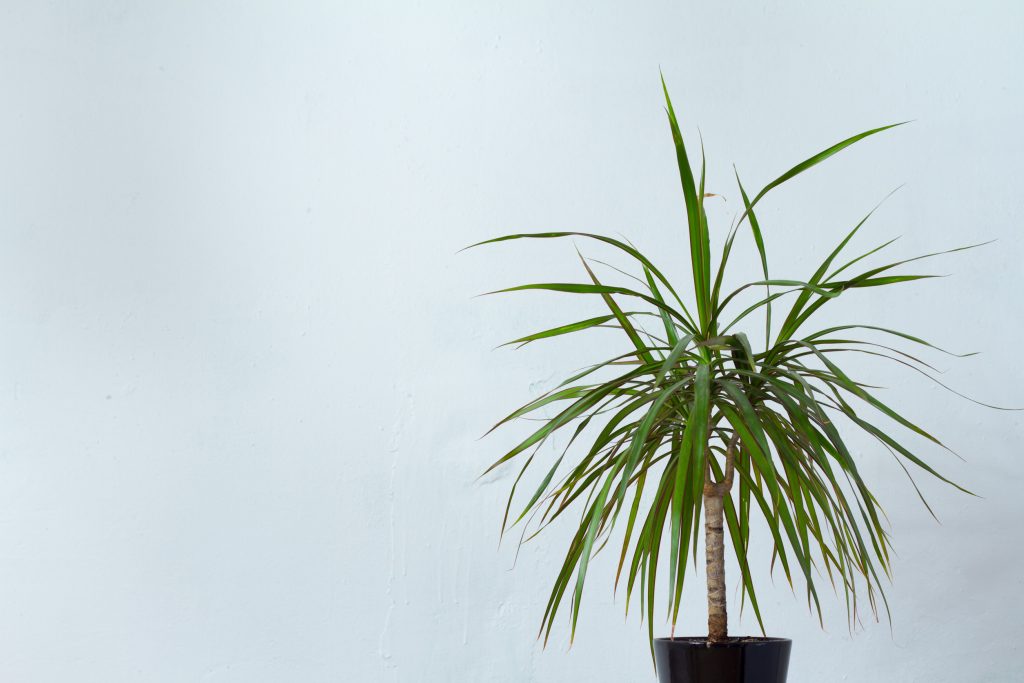Dracaena plants are identifiable by their woody, ringed trunks and sword shaped leaves. There are over 170 species of Dracaenas, all varying in size, shape, and color. Dracaena foliage may be completely green, or may include stripes of cream, red, shades of green, purple, or yellow. Most species of Dracaena are native to Africa, Asia, and northern Australia, where some species can grow over 20 feet tall! Indoors, they likely will not exceed 10 feet tall. Lucky Bamboo isn’t a bamboo plant at all, but a type of Dracaena! The Dracaena became famous thanks to the NASA Clean Air Study, which listed it as one of the most efficient plants in improving air quality. It is, however, worth noting that most species of Dracaena are toxic to both humans and animals. Ingestion may cause stomach and mouth irritation, along with possible vomiting.
Dracaenas grow best in bright, indirect light. They can do well under low light conditions and fluorescent lighting, hence their popularity as home and office plants.
Water with filtered or rain water when soil is 50%- 75% dry. Note that Dracaenas are sensitive to fluoride, a mineral commonly found in tap water.
Dracaenas prefer higher humidity, around 50%- 70%, but can tolerate lower humidity environments. Keep temperatures between 65 to 80 degrees Fahrenheit.
Dracaenas can be propagated by stem cutting or separation. For propagation via cutting, cut the trunk of your Dracaena, and place in filtered water or moist soil. Alternatively, when your Dracaena produces small pups at the base of the parent plant, remove and repot in soil.
